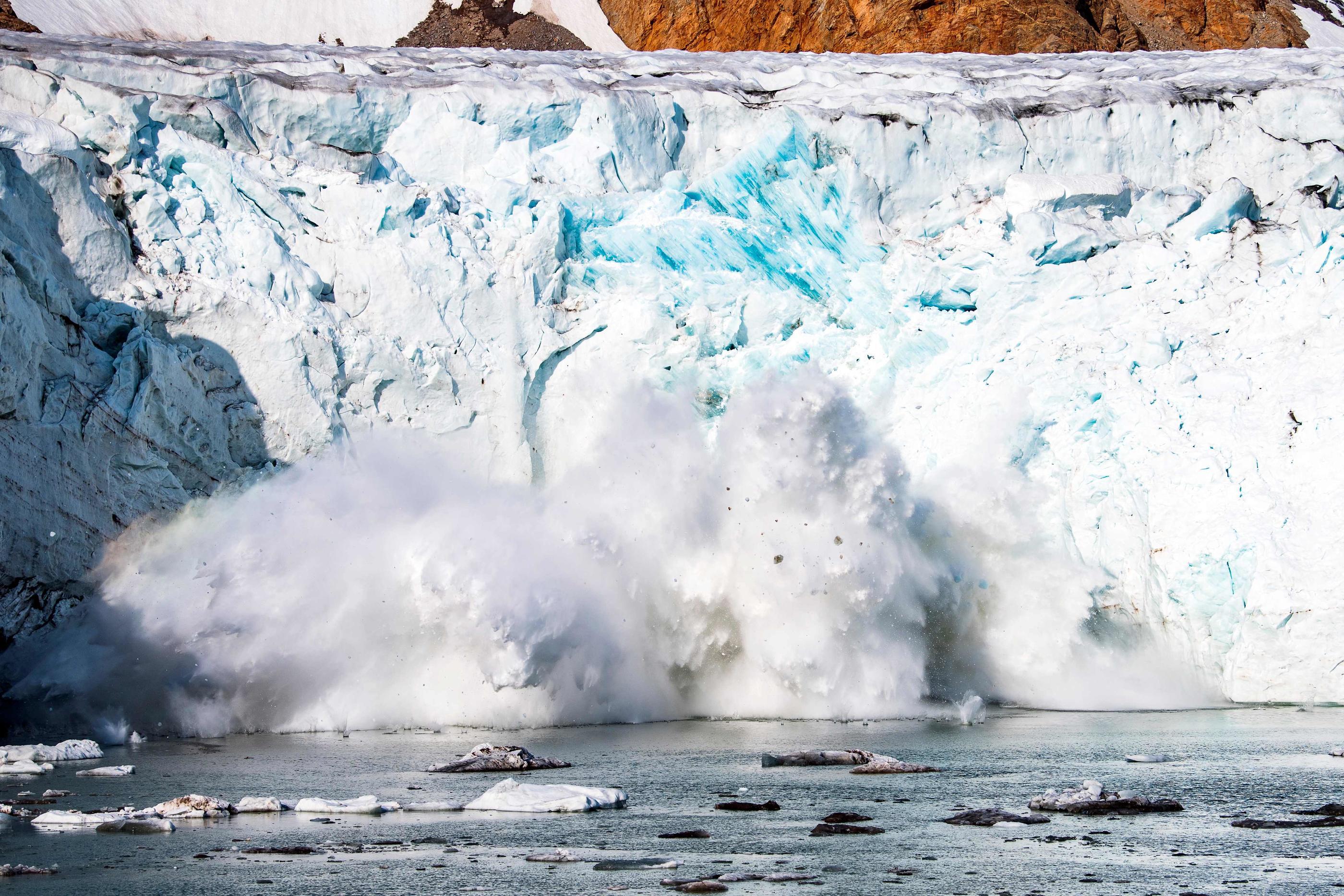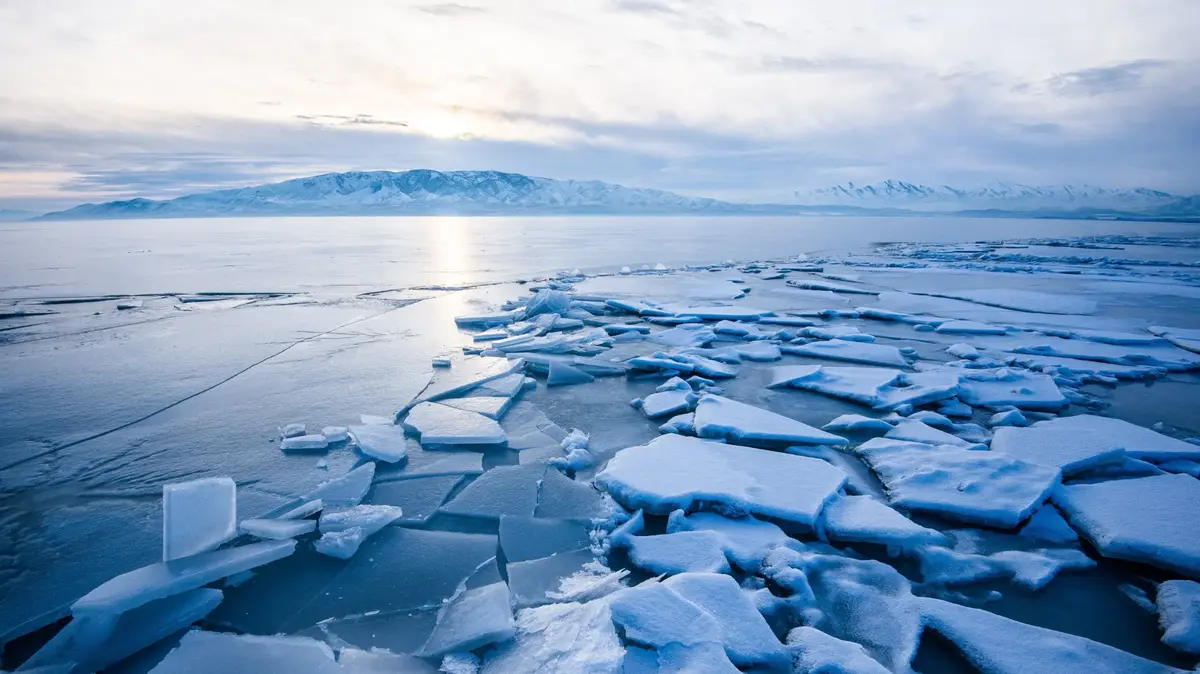Take France. Cover the surface with a thick layer of ice 60 centimeters high and let it melt in the sun. 267 billion tons of water would escape, causing the sea level to rise irreparably. Repeat the operation every year and you will understand why the melting of glaciers worries scientists so much. According to an unprecedented study carried out by French researchers based on satellite observations, the planet's 220,000 glaciers are melting "at a record rate", their mass having fallen by 267 billion tonnes on average each year since the year 2000. An observation all the more terrible as the disappearance of these immense tongues of ice would have cascading consequences on our lives.
The more they melt, the more the sea rises
.
"A fifth of the rise in sea level comes from the melting of glaciers", underlines the glaciologist and CNRS researcher Etienne Berthier, who took part in this study.
Since 1993, melting ice has contributed at least half to the rise in sea levels, and scientists have already warned that large areas of ice in Antarctica are melting faster than expected in worst-case scenarios.
As if to illustrate their point, the largest iceberg in the world, half the size of Corsica, broke off the sea ice on Thursday, a consequence of climate change caused by human activity.
Read also Global warming: these crazy techniques to manipulate the weather
To measure the scale of the expected disaster, some fifty scientists combined simulations of the melting ice covers of Antarctica and Greenland - which alone contain enough water to raise the level of the oceans by 65 meters - as well as simulations concerning the 220,000 glaciers on earth. According to their study published in the journal
Nature,
"the global level of the oceans will continue to increase". “But we can halve the contribution of melting ice,” says lead author Tamsin Edwards of King's College London. If we limit global warming to 1.5 ° C compared to current commitments ”from states, which would lead to a rise in temperatures around
3 ° C, melting ice would cause the oceans to rise 13 centimeters by 2100, against 25 according to current projections.
Natural water towers
. “In hundreds of regions, glaciers play the role of natural water towers by storing water that has fallen in the form of snow in winter,” emphasizes Etienne Berthier. Glaciers then return this water in July-August when people need it for agriculture or home use. In the future, snow will still fall in winter, but it will undoubtedly melt quickly in spring and will no longer be available in summer, making periods of drought even more dramatic, ”explains the French scientist. Certain arid zones are particularly exposed to this risk in the Andes and in Central Asia, in particular in the mountains which feed the Aral Sea. What about the situation in France? No risk a priori on the level of the Rhône, partly fed by alpine glaciers.But the glaciologist is more worried about the small rivers upstream, which are more dependent on melting ice. Not to mention the hydroelectric installations that depend on mountain water to generate power in the alpine valleys.
Forget the walks on the Mer de Glace and the glaciers in the Pyrenees
. When the glaciers disappear, a whole landscape is turned upside down and with it all the tourist activities associated with it, such as mountain walks to admire the Mer de Glace near Chamonix. It is also no coincidence that the President of the Republic, Emmanuel Macron, went there in February 2020 to discuss the effects of global warming and a plan to protect the Mont-Blanc massif. “The symbol is strong because it means that the next generations will not be able, like us, to admire the mountains covered with glaciers, sighs Etienne Berthier. According to some simulations, the twenty or so glaciers in the Pyrenees will have disappeared within twenty years and in the Alps, their surface area should be reduced by 80 to 90% by the end of the century. "
Mer de Glace, 1910-2020.
This is what we are fighting for.
pic.twitter.com/BVr99M7UjZ
- Emmanuel Macron (@EmmanuelMacron) February 13, 2020
Glacial species threatened with extinction
. Spiders, bacteria, aquatic insects, micro-organisms, birds ... "Several species living on glaciers depend on them to survive," explains Sophie Cauvy-Fraunié, hydro-ecologist at the National Institute for Agronomic Research (INRAE). They live in particular in lakes connected to fjords or rivers dependent on the glacier which plays the role of "fresh water tap" to help them survive. “In Peru, we discovered that a species of bird used the glaciers as a shelter to make its nest,” explains the researcher. Microorganisms that live in their health are tough guys because they are able to withstand cold, lack of food and even lack of light. If the glaciers disappear, it is therefore a whole community and as much biodiversity that will disappear in turn.












